In pictures: Pan-Pot's Berlin studio
Busy DJ/production duo on their latest album The Other, their live setup and influences
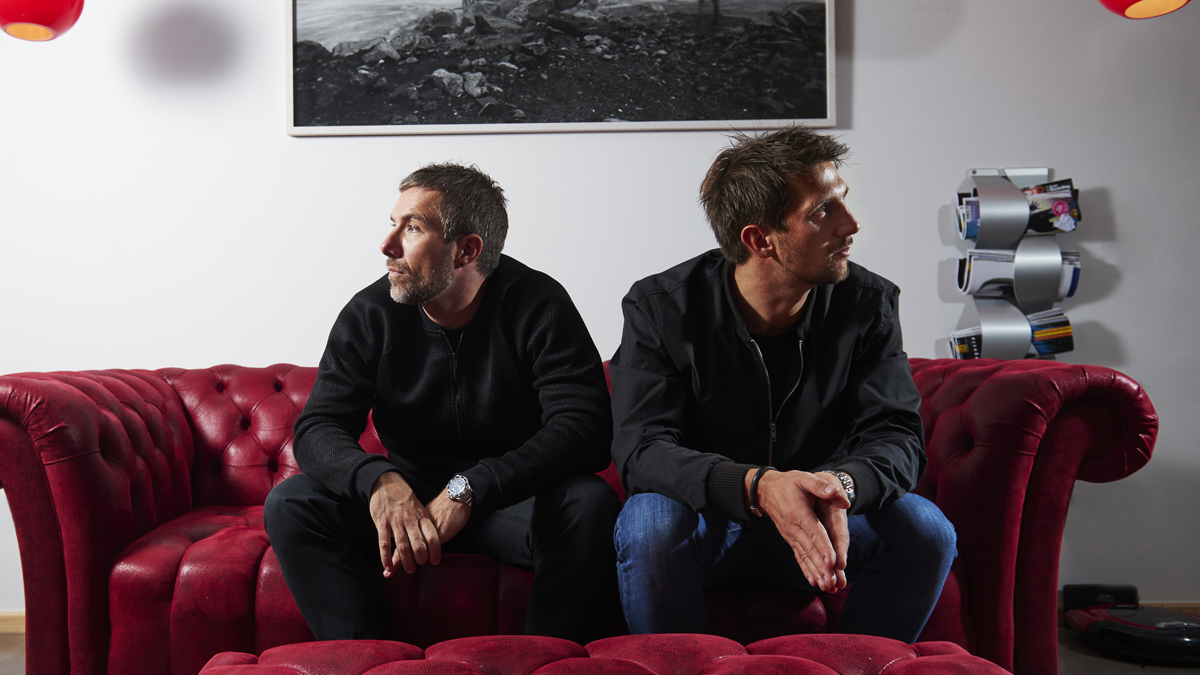
Intro
Over the past decade, Berlin-based DJ and production duo Pan-Pot have toured relentlessly, building themselves a reputation as one of Dance music’s most industrious, yet consummate DJ double acts.
In 2007, following a stream of EPs, they released a debut album Pan-O-Rama. Since then, Tassilo Ippenberger and Thomas Benedix have worked on several follow-ups, all of which were shelved due to live commitments.
As DJs, their vast experience playing to a wide range of audiences at the biggest clubs in the world is almost unparalleled. Wherever Pan-Pot play, they’re able to adapt, demonstrating their vast experience of the global circuit and the flexibility of their partnership on stage.
The same approach has been taken with their new album, The Other. Released on their own Second State label, the duo finally decided to stand still and take time out to make the album they always wanted to make.
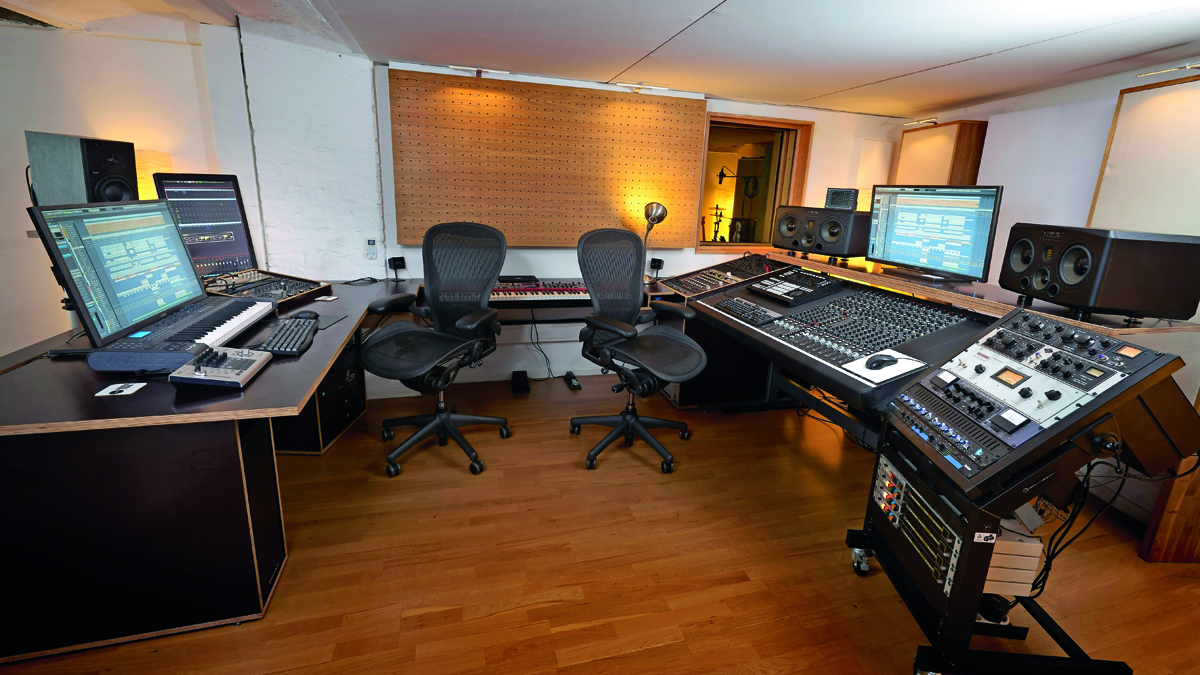
Label boss
Why did you launch your own label imprint, Second State?
Tassilo: “We started in March 2014, later than we wanted or expected to. The years before we were on Mobilee records and really felt quite comfortable there, and it was about four years ago that we thought about doing our own imprint. Sound-wise we have developed more and more as a Techno act and always sounded different to all the other artists on the label.
“When we started on Mobilee it was like one big family, all artists hanging out together, and that’s something we wanted to give back, to create an imprint with artists who are close friends like back in the days. So we started Second State, and all of the people we are working with are friends and see this as their platform and their family.”
How much do you get involved with running the label on a day-to-day basis?
Thomas: “It is a lot of work of course, but we take the time because it’s a really important part of what you have to do when you run a label. We listen to new stuff from all our artists, and on the organisational side we have to give a lot of input because the parties we’re organising take a lot of time and money.
“But it’s an amazing sight to see how people develop and grow and appreciate what we give to them. Artists on the label know they have to work hard but we constantly meet and give feedback to each other, and they also give their feedback on our stuff. It’s a close circuit, so we’re sitting with them in the studio and giving them advice and they’re also listening to what we’re working on in the production phase.”
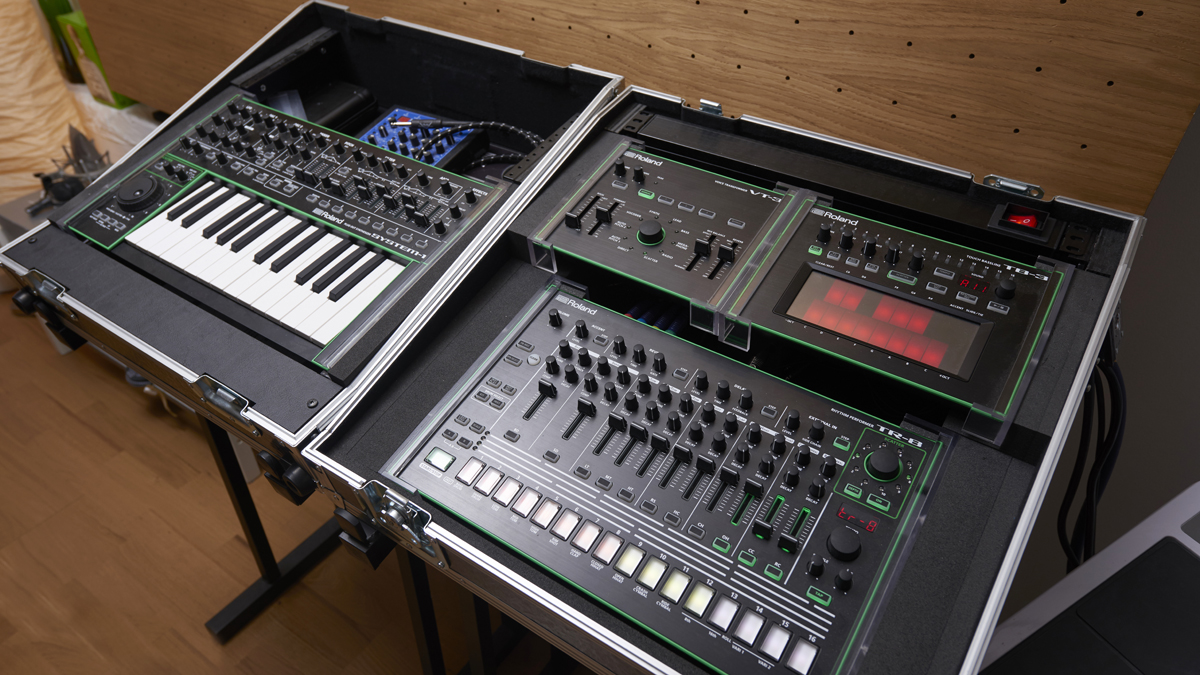
Time well spent
Why has it taken eight years to follow up the release of your debut album with The Other?
Tassilo: “Heh heh, it’s a good question. On our studio console we actually have three unfinished albums we have tried to complete over the past eight years. So we haven’t been lazy for sure; it’s more that we didn’t make the albums in time or have the discipline to really finish them. Then in 2014 we said, okay, this time we’re going to really take our time, make an album and bring it to an end.”
Thomas: “It is really due to the fact that we didn’t have the time. We’re travelling a lot and when you always have to stop working on tracks you lose a little bit of focus. It’s nothing to do with discipline but knowing you’re not really at one with making the album anymore.
“Sometimes we can do an EP in two or three weeks or months, but to make 12 tracks can take years because you have to start thinking creatively, and we also wanted to make more than just techno tracks and do more creative stuff working in different genres, and that takes time.”
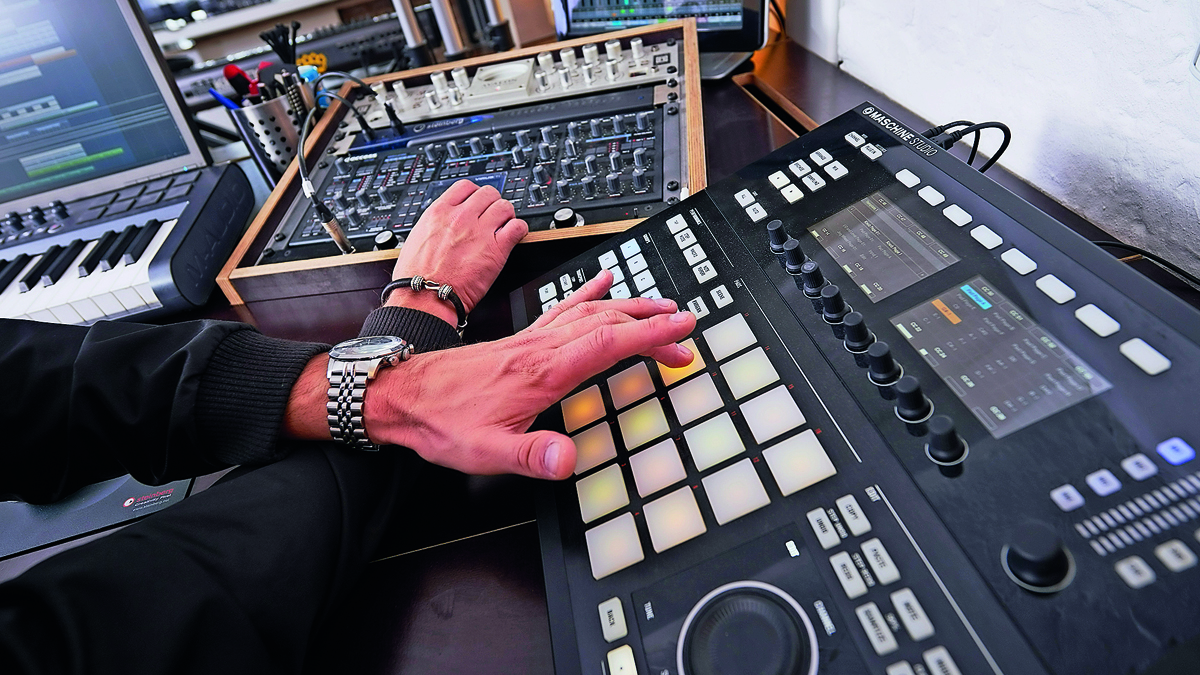
Creative process
Was the creative process that much different to how you approached your debut album?
Tassilo: “We basically started the project in January 2014 and said we’re going to produce every track from scratch and there won’t be any stuff on there that we’ve already made. It took one year of production, collecting ideas that progressed into drafts until we got to the first production phase.
“Then we had a very complex mixing process, because we have all kinds of different genres on this album, not just Techno or Dance tracks, so the mixing process needed a lot of experimenting and trial phases to find the right sound for the album. The mastering process also took a lot of time; we tried several mastering styles to find out what would be the perfect solution.”
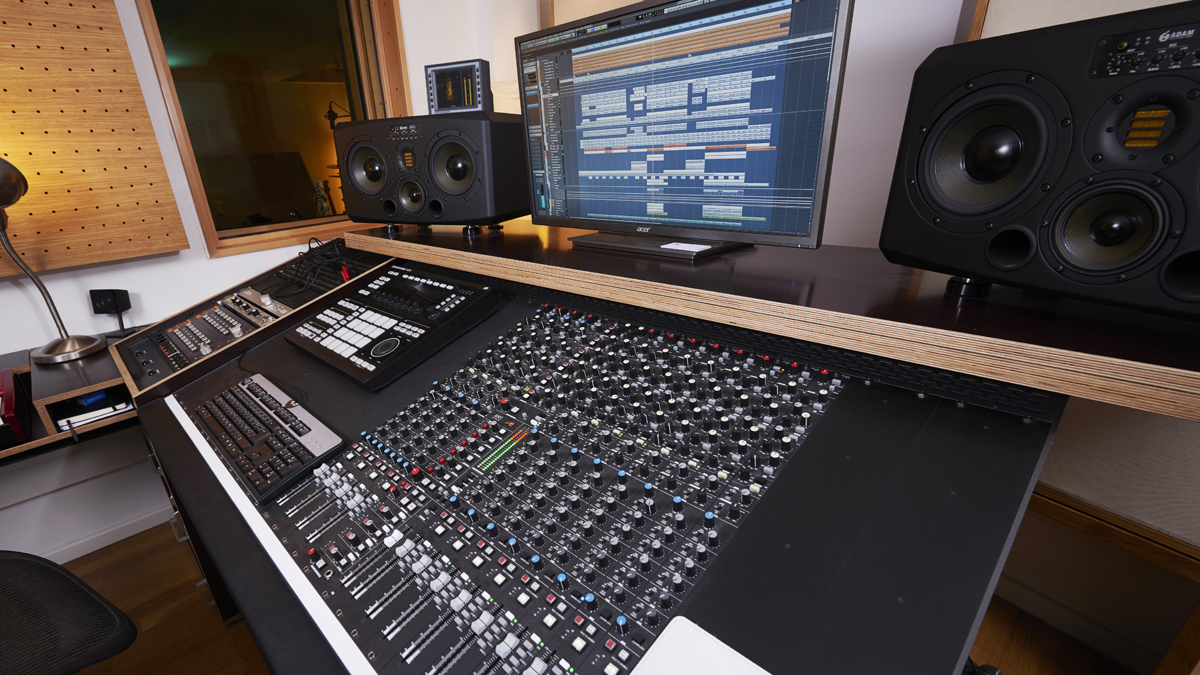
The Other
Would it be fair to say that The Other is more than just a Dance album but an album that’s also intended for home listening?
Tassilo: “Yes, there are a lot of tracks that are meant to be listening tracks, and we tried to find the right blend of mixing and mastering so you can play the tracks in a club, on CD or in a digital MP3 context. And not just that, but we felt it was important that the Dance tracks could also function in the home. You should be able to listen to it all in one flow, and that took up a lot of extra mental preparation.”
How much did making an album of such diversity take you out of your comfort zone?
Thomas: “We learned a lot because we got a lot of advice from the studio complex and the people working around us. I think the whole production method was good for us because we started with a simple workflow using Ableton Live at the idea collecting phase for the first six months. Then at the point where we said, okay the tracks are finished, we bounced out all the stems and went into Cubase 8 and started mixing there.
“From that point on, we did the whole mixing process in a very professional way, like you might for a big Pop production, with a lot of software handling, dynamics and effects.”
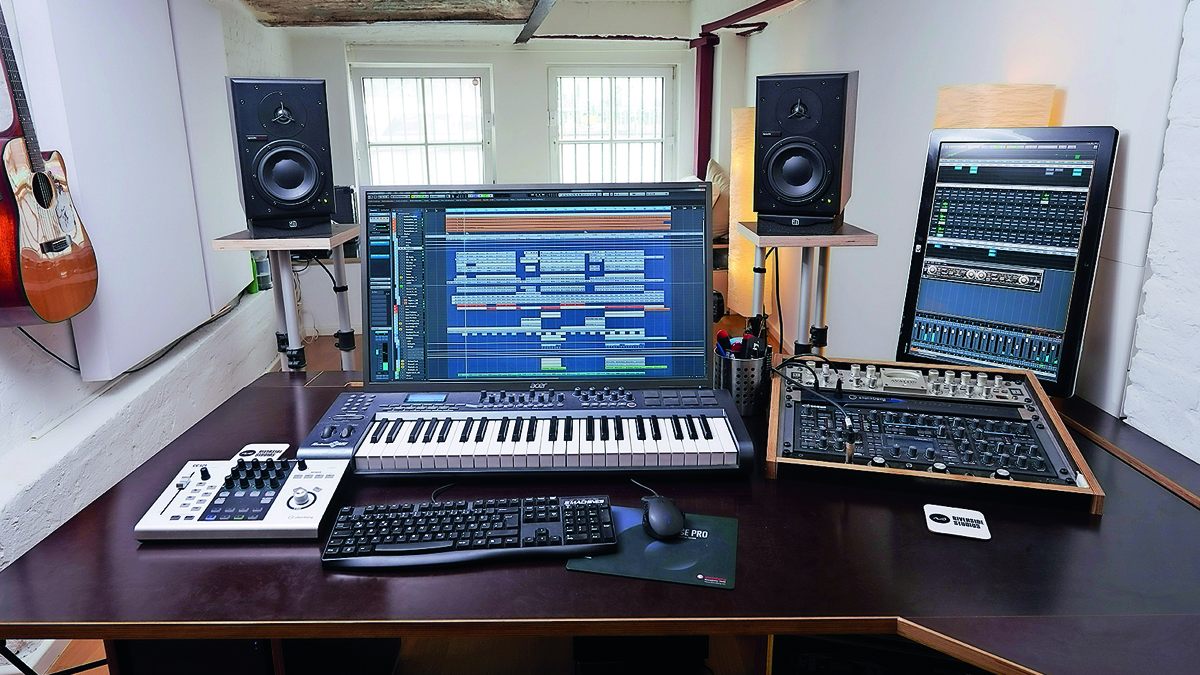
Influences
Some of the album’s darker moments reminded us of Richie Hawtin... Was he a background influence?
Tassilo: “Obviously, for the track 808 Nirvana there is definitely an influence from the old Plastikman stuff, especially in the rim shots and how we used them in the production. But funnily enough we started the album with all the listening stuff, like the ambient tracks The Luxury of Living Day By Day, Riot, and the last track, Punxsutawney.
‘These are what we started the album with because we were really interested in doing something other than Techno or Tech House. We wanted to work with other musicians and singers – people who come from a different musical background, and give them enough opportunity to influence us.”
Thomas: “For example, we had known the Berlin vocalist Frankie for some time and recognised that she would really be able to bring something to the project. The beginning of the album was the most fun time because we did all the stuff that we wanted to do but don’t usually do.
‘We love Techno and love the stuff that we play live in our DJ sets, but it’s also very relaxing for us to escape and do something completely different. Because of how much fun it’s been for us, we will definitely work on other genres and styles in the future, but our main thing will always be Techno.”
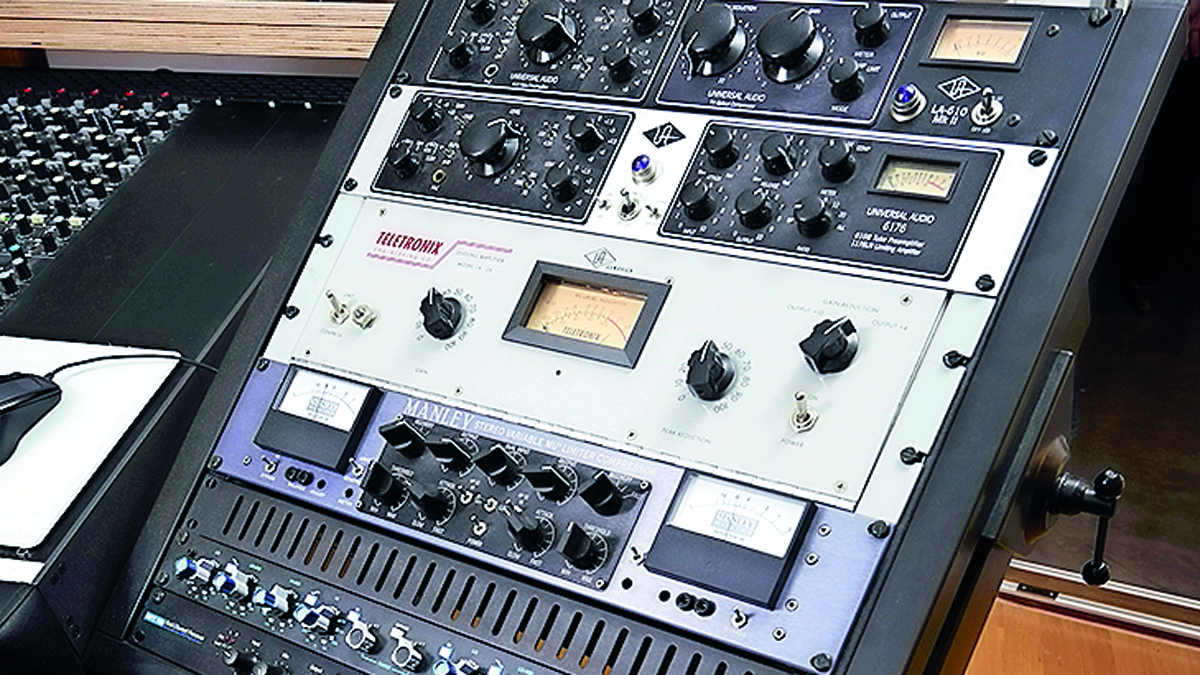
Studio tools
You switched between Cubase and Ableton throughout the duration of the project...?
Tassilo: “We used to work with Cubase SX3 back in the day, and both know the software with blind eyes, but on this album we felt it was quite important to try out what would be the best way of doing everything.
“For us, Ableton Live is the best way for us to start developing ideas, but we knew that the mixing process would take a lot of summing and buss routing, so we decided to go back to Cubase for that element of the production. We also had help from one of our studio mates, Oliver Laib, who is a real Cubase freak, and he helped us use the software to develop the sounds in the right direction.”
Thomas: “There is nothing faster than Ableton for bringing ideas quickly into the sequencer, but for mixing or detailed work and summing it’s way better to use Cubase. I would never judge other people on what they’re using in the studio, but this was our way to get the best out of the software.”
What would you say makes the PC you’re using so special?
Thomas: “It has the latest Intel processors and a completely cool chassis that doesn’t emit any noise at all. There’s something like 16 regulators in the box and it has the fastest motherboard you can get. We did a test and it is three and half times faster than the fastest MacBook Pro. It was custom-built by this company from Hamburg, but the price is a third of the cost of what we paid for a Mac.”
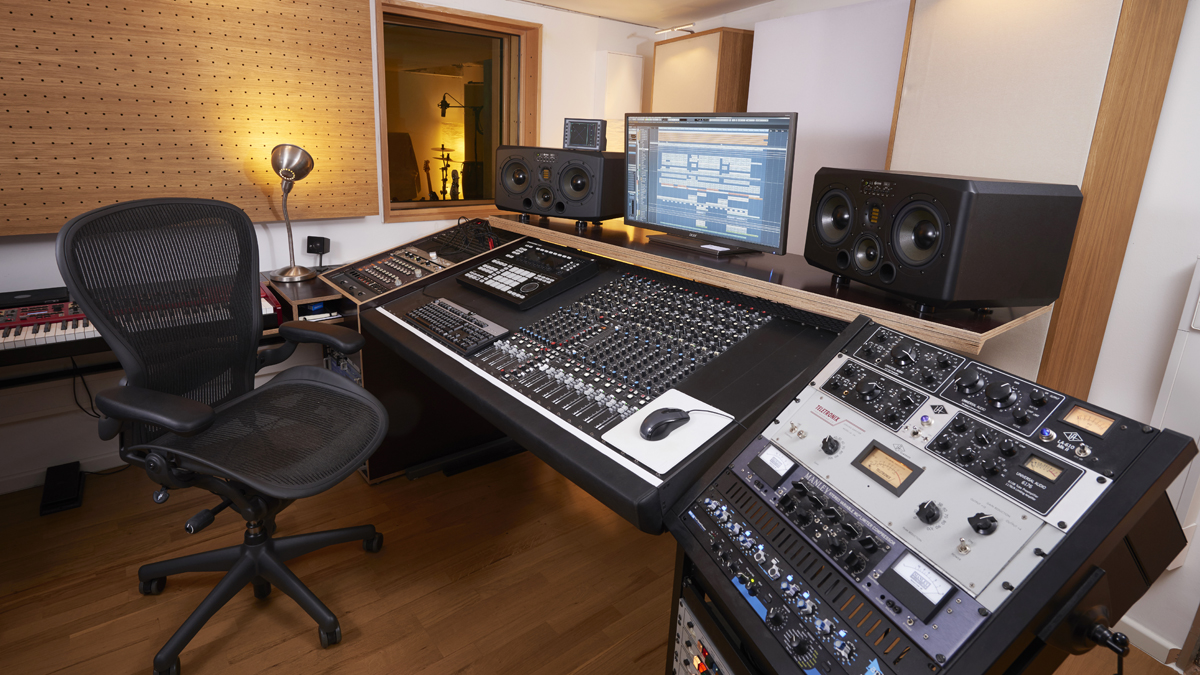
Recording process
So which recording studio did you do most of the writing and recording in?
Tassilo: “We have two studios; Thomas has his and I have mine. When we started the album we collected ideas separately, then we sat down together and added to each other’s ideas. At least that’s how we started, but at a certain point when we had collected quite a lot of ideas, we both came together at my studio to start developing the arrangements. The mixing was done 50/50. I’m more of an objective listener, which is good when two people are working together as you always have a controlling influence there.”
Do you agree on almost everything or were there a lot of disagreements?
Thomas: “Sure there were disagreements, but this is part of the whole process. In the end, the discussions and the time we might spend fighting is all done in a good way. It’s all about compromises and, in our case, through compromising we always end up with better results, and have done for some years now.”
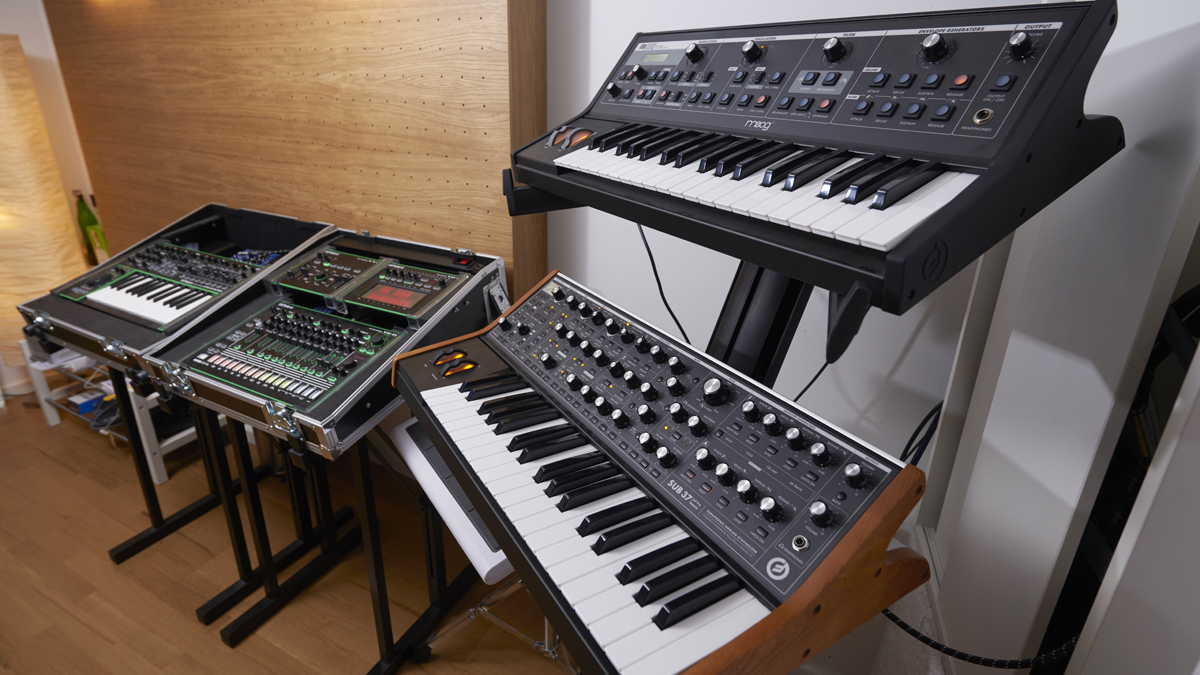
Hardware
Which hardware synths did you use?
Thomas: “We have all the Roland synthesizers, like the TB-3 and the TR-8 Rhythm Performer, a Moog Sub 37 – although that’s quite new here – and the Moog Little Phatty. Now the studio is finished we can really spend a bit more time using them, but last year the studio was not really wired properly so we couldn’t use them too much.
“Modular systems are interesting too, but very time-consuming. As soon as we have some time, that is something I’d be really interested in moving towards, but right now the most comfortable and fastest way to get results is the software route – it’s really all a question of time.”
Do you spend a lot of time creating your own sound libraries from scratch?
Tassilo: “Never ever. As Thomas explained, we have a huge bank of sound libraries and use some of them more often than others, but we don’t spend a lot of time creating new sounds because we want to use the spare time that we have in the studio as efficiently as possible.”
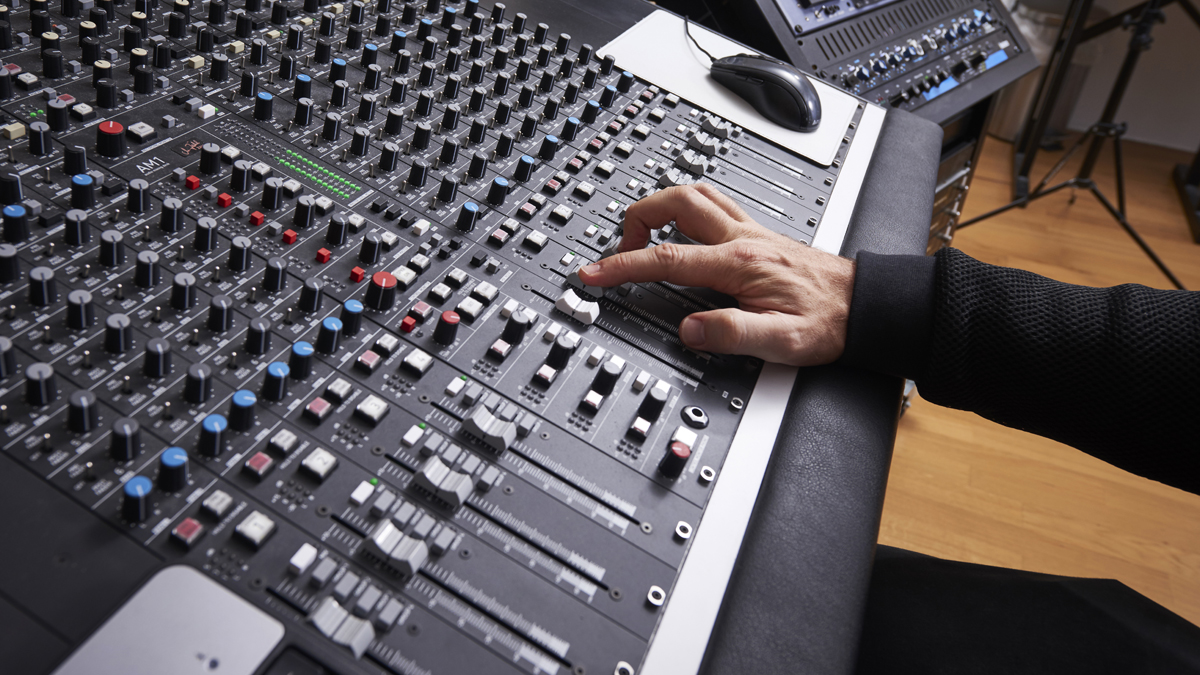
The final mix
What did you use to get that final stereo mix?
Tassilo: “We mixed the album using analogue summing amps and used the Dangerous Music 2-Bus summing amp and an AM1 Mixing Console from Zahl. We rewired all of the tracks from the computer out to a DA converter, and from there to the summing amp and back into the computer.
“I bought the first Dangerous 2-Bus just to figure out whether it would sound different when mixing out of the box. Even though there are people who say there’s no difference, I think there is a difference and it sounds nicer.”
In what way do you think using that particular hardware benefited you over software?
Tassilo: “In my opinion, you mix in a different way with analogue. You take more care and spend more effort on listening to the sound because you don’t see it properly like you do when you’re using all these analysers. I think it was a very interesting process and important for us within the production and mixing chain because it’s a very different way to work.
"With all the screens these days, the computer kind of tells you or gives you a visual idea of what you’re hearing, but it’s really interesting if you mix by listening alone, because it makes you decide on different elements of the sound in a different way. Usually, you see a waveform on a digital analyser and think, okay, it looks like it has to look like, but when you’re only listening to it then you’re getting a different perspective.
"These days, everybody is used to seeing what they’re hearing, but listening is something we wanted to get back to, even though it’s quite exhausting.”

Live set up
You paid a lot of attention to the artwork and building a visual theme around the album...
Tassilo: “To make an album with 14 tracks was a big process that took a lot of time and was very conceptual, so we wanted to have artwork that was made using a very special method. Our manager found this girl called Suzie C who showed us her stuff and we found it really interesting because we think it’s quite unique.
“The idea was to have images that are influenced by soundwaves, so she is basically playing our tracks and filming how certain visuals react to the music; the bass especially. We thought this is a great way to bring visual artwork to the music. Although the visuals won’t be filmed live during a show, we have content prepared that has already been through some post-production, that enables us to use this material for the live shows.”
You seem to have quite an innovative DJ set-up too…
Tassilo: “We’ve been working together with Native Instruments for a long time, so our DJ set-up is basically that. We’re using Traktor on two systems and also using Native Instruments’ D2 DJ controllers. I have two track decks and two remix decks, so I can always add live elements to the tracks I am playing and use a lot of effects on those live elements to create special moments in the breaks.”
The D2 controllers are fairly new, so what do you like about using them?
Tassilo: “For me, the D2 controllers are really nice, because now you have a screen where you can see your waveforms so you don’t have to look at a computer anymore. When people play with CDJs they’re always facing the audience and that’s something I really like.
“You don’t have to look to the side anymore; you just look down to the screen and then when you look up there’s no big distraction. And you have all these effects and extra elements within the remix decks, which is great technology to use for DJing.”
How do you apply the effects to the tracks you’re playing?
Tassilo: “I can choose between evolving snare rolls or if I have chords or vocal sounds from tracks I really like, I can sample them on the fly while I’m playing. With the D2, you also have extra effects control, so I can easily add delays to the effects we have within Traktor, adding them to the live elements and controlling them on the fly using an extra fader on the mixer.
“Some people are using these external Boss DD-7 digital delays and stuff like that, but you can basically do all that in the box now.”
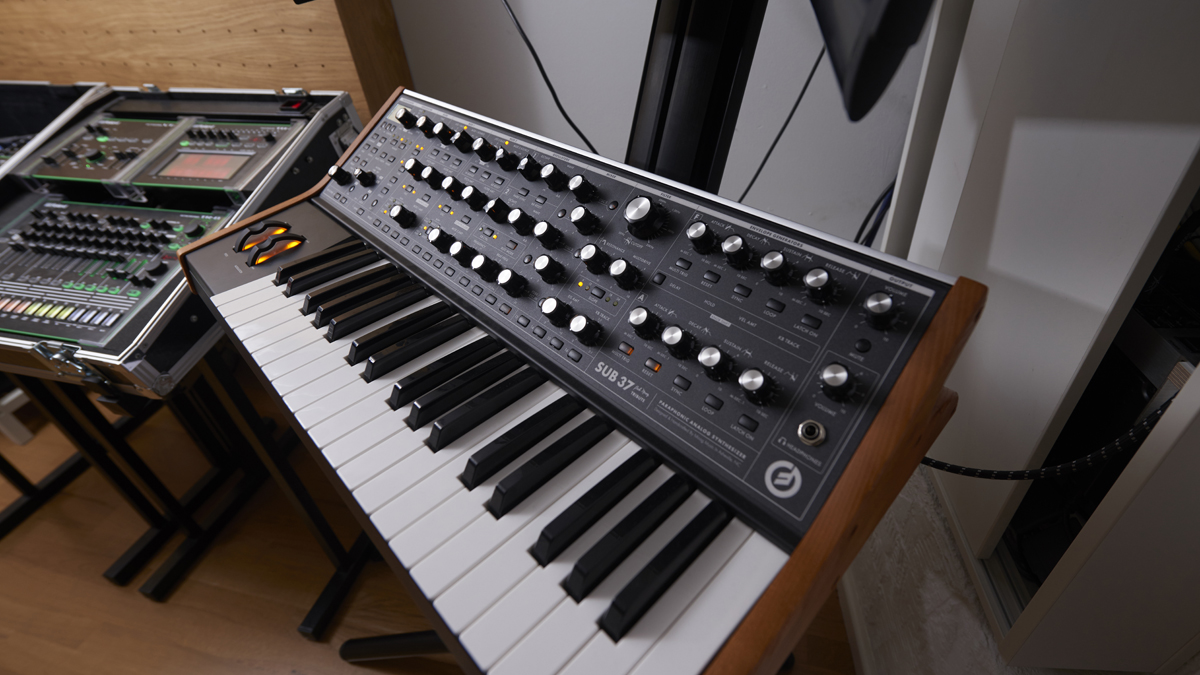
Party time
In terms of you responding to each other during a DJ set, is that something you’ve had to work hard to develop?
Tassilo: “We just go out there and do it. Sometimes it’s a surprise and we have to react to each other but that’s also the fun of playing back to back. But we’ve known each other for 12 or 13 years now, so we know each other very well, respect each other a lot and give each other the time to play each track.”
Thomas: “I always say that if you’re more prepared you’re not prepared. You can’t really prepare for a party with tracks. You can have some stuff in a certain kind of style, but it really makes no sense because there are too many factors and influences to take into consideration.
“You always need to be flexible and be able to react immediately to the crowd and the mood, and that’s the most important aspect. We try to be open-minded and adapt to what we see by the way the people are dancing.”
So, do you still find the time to party yourselves ever?
Tassilo: “Not often [laughs]. We have just come back from a tour of Asia. We went to Singapore, Bangkok and Bali, and then to Australia, all in two weeks. This is extremely heavy on your body. We go to the gym a lot, do a lot of sports, go running and try to keep our bodies very healthy and eat well.
“We have to stick to a healthy lifestyle due to this heavy touring schedule, the partying and DJ sets, because the physical demands are extreme. The long distance flying and lack of sleep at the weekends is very exhausting, but if you have the right life during the week then you can handle it.”
The Other is out now via Second State. For more information head to Pan-Pot’s official website.

Future Music is the number one magazine for today's producers. Packed with technique and technology we'll help you make great new music. All-access artist interviews, in-depth gear reviews, essential production tutorials and much more. Every marvellous monthly edition features reliable reviews of the latest and greatest hardware and software technology and techniques, unparalleled advice, in-depth interviews, sensational free samples and so much more to improve the experience and outcome of your music-making.


“I’m looking forward to breaking it in on stage”: Mustard will be headlining at Coachella tonight with a very exclusive Native Instruments Maschine MK3, and there’s custom yellow Kontrol S49 MIDI keyboard, too
“Turns out they weigh more than I thought... #tornthisway”: Mark Ronson injures himself trying to move a stage monitor
“I’m looking forward to breaking it in on stage”: Mustard will be headlining at Coachella tonight with a very exclusive Native Instruments Maschine MK3, and there’s custom yellow Kontrol S49 MIDI keyboard, too
“Turns out they weigh more than I thought... #tornthisway”: Mark Ronson injures himself trying to move a stage monitor









